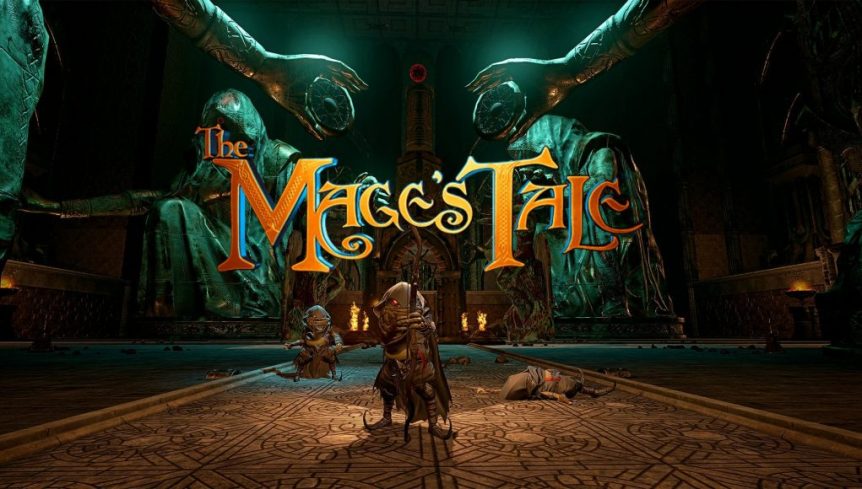Long-time customer and partner (and our New Orleans neighbor) inXile Entertainment has utilized TurboSquid for years as a quick and cost-effective tool for bringing their rich, world-building games to life as an independent studio. inXile uses TurboSquid for early game prototyping, all the way through final development, to populate their worlds with props and elements to save on vital manpower. Recently, inXile released a PlayStation VR port of their hit game, The Mage’s Tale, marking one of their last independent releases before their acquisition by Microsoft.
We sat down with Maxx Kaufman, Art Lead for The Mage’s Tale, to get his take on the development of such a sizable and successful VR project.
Q&A with Max Kaufman, Art Lead for The Mage’s Tale
TurboSquid: Thanks for taking the time, Maxx. The Mage’s Tale previously released on PC VR. Did you run into any particular challenges with the PSVR port?
Maxx Kaufman: Given the older hardware, PlayStation itself is a weaker machine than even a min spec VR machine. That meant everything in the game needed attention in order to run properly in PSVR – environments, spells, particle effects, and LODs (Levels of Detail) all had to be adjusted. The main challenge was making the changes, in order to meet the lower system requirements, without changing the game in any real or noticeable way. Players of the original PC versions should find everything as they remember, despite the changes we had to make to almost every visual aspect of the original game.
TS: Reviews of Mage’s Tale talk a lot about how deeply immersive this game is. What would you say was the one most important aspect of the visual immersion?
MK: We used familiar fantasy themes to pull the players into the world and then created an environment that people dreamed of exploring. Think of it as following a treasure map in an ancient tomb with traps and adventure.
TS: World building was obviously a huge part of this project. Did you feel you were limited with the amount of information you could keep in the FOV (Field of View)? If so, how did you overcome?
MK: Well, you are always somewhat limited in VR vs PC / Console. In VR, you have to run a certain framerate or the player can become disoriented and maybe even vomit. We don’t want that because that is BAD. So we have some constraints on the amount of drawcalls (basically how much visual fidelity we can have on screen). We used very aggressive LOD’s on our models and needed to keep our material complexity within reason. I feel that we still created a very compelling world, which the VR headset augments by making it so immersive. When you can look anywhere and not see the real world, it has a huge impact on the player perception of reality. We wanted player to feel the power of being wizard in a realistic fantasy setting without LARPing. Fireball…Fireball…Magic Missile…
TS: Ha! Of course! But that still means filling your world with plenty of eyecandy. Where does TurboSquid, and stock assets in general, fit into your asset pipeline?
MK: We used TurboSquid quite a bit. It was a huge help in the beginning of production getting block in elements we needed to demonstrate the game. Then, during production, we used it more for props and elements that we did not have the manpower to build.
TS: That’s excellent to hear. We always love seeing what you make, and we’re so pleased to be a small part of the process. Last question for you today: visually, what is your favorite moment in the game?
MK: My favorite moment in the game is right at the beginning: the player is thrust into the world and placed on a giant statue hand that moves. I really like that sense of scale and wonder, especially when you are viewing it within virtual reality. It helps set the stage for everything to come.
Thank you for taking the time, Maxx! If you’re a TurboSquid customer who is interested in being featured in our customer spotlight series, you can reach our team by emailing me, the team’s Brand Engagement Specialist, at cfontenot@turbosquid.com.

